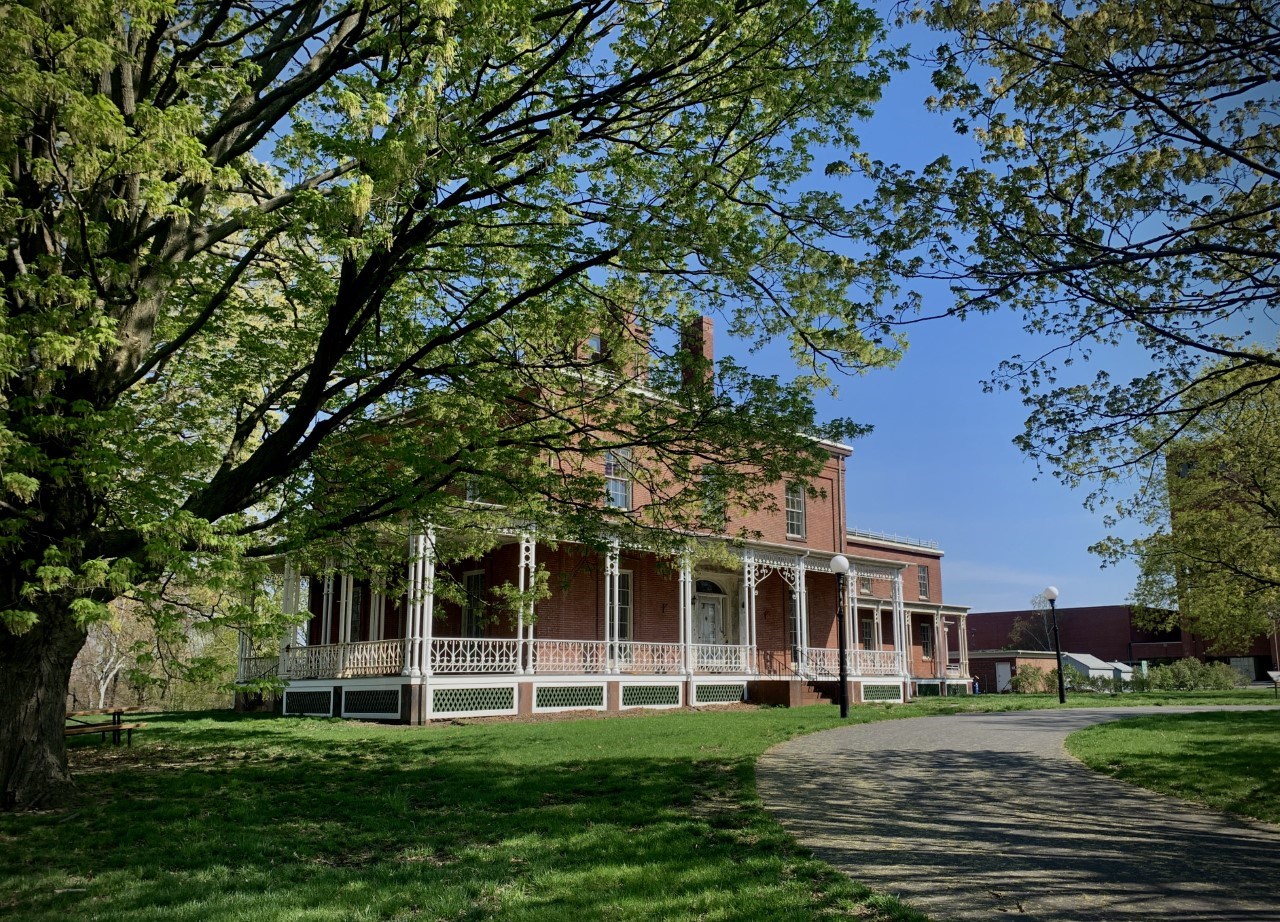
Photo Credit: NPS/Dani Beekman Quarters 1, or the Commanding Officer’s Quarters, built under the direction of Major James Wolfe Ripley between 1845-1847, replaced the 1820 Superintendent’s Quarters located on what is now the site of the Main Arsenal, Building 13 and was condemned in 1843. Continuously for almost 170 years the Commanding Officer’s Quarters housed the Superintendents and Commandants of Springfield Armory, beginning with Major James Ripley and ending with Lt. Colt C.B. Zumwalt when the Armory closed in April 1968. 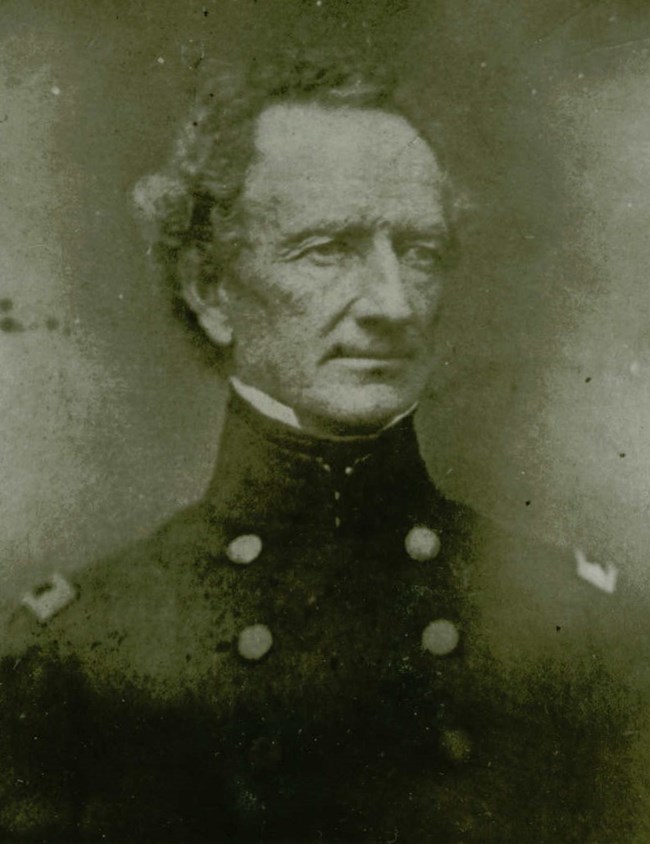
Photo Credit: Springfield Armory NHS Archives Under the direction of Major James Ripley, Springfield Armory underwent many changes. Ripley wrote to the Ordnance Department “…little has been done for many years in the way of improving the grounds about the Armory, and their appearance is anything but creditable to the establishment.” And he requested funds to improve the grounds of the Armory, which included purchasing additional land, a redesign of the grounds, planting of numerous trees, hedges, and flowers, installing gas lamps, and the construction of fence and numerous buildings. The construction of the Commanding Officer’s Quarters faced setbacks in the procurement of funds, approval for the building, and then in the construction process. Major Ripley initially requested funds to repair the current quarters in 1841, but after having the building inspected by a few individuals he followed the advice of one and requested that it be demolished and a new quarters built in 1842. “Were the house my own I have no hesitation in saying that instead of making the contemplated repairs I should at once adopt the suggestion of the builders….and remodel and rebuild the House.” Major Ripley to Lt. Col. George Talcott in 1842 This request was denied due to local scrutiny of Springfield Armory and a shortage of funds, but in 1843 Major Ripley applied again and the funds for construction were approved. Ripley initially requested funds ($10,000) in 1842 to rebuild the Commanding Officer’s Quarters, which was denied and in 1843, Ripley again requested funds ($12,000) which was approved; he began entering contracts for materials and construction of the quarters. Due to its extravagance it was often referred to as “Ripley’s Palace” and his “magnificent mansion.” 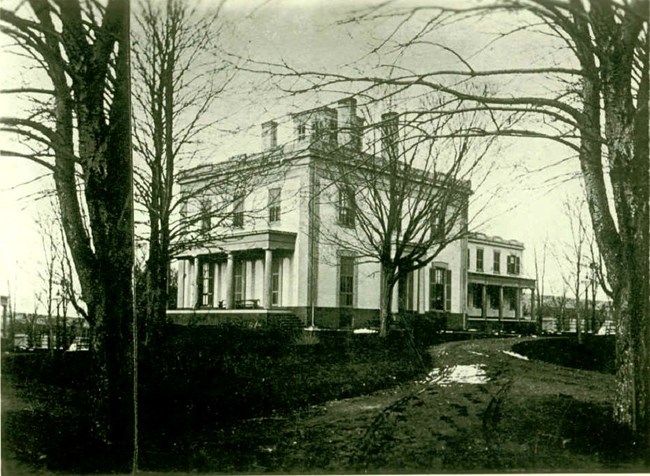
Photo Credit: Springfield Armory NHS Archives In the early 1850s renewed efforts to reinstate civil leadership at National Armories prompted reports being sent to Congress on the running of armories under the military. Springfield Armory underwent examination. Initial reports concluded that construction of the Commanding Officer’s Quarters cost around $72,325 (which included land purchased, cost of the building, and cost of landscaping). This was seen as an unreasonable amount to spend, given that many houses in the era cost only a few thousand dollars. And in the 1860s a duplex built on the grounds (the Junior Officer’s Quarters) cost around $15,000. Major Ripley responded to this report by stating that the construction of the Quarters cost around $21,000 and that the land purchased cost around $3,000 for a total estimated cost around $24,000. What was the true cost of the building? We may never know, but it led to increased scrutiny of Springfield Armory and its Commanding Officer. 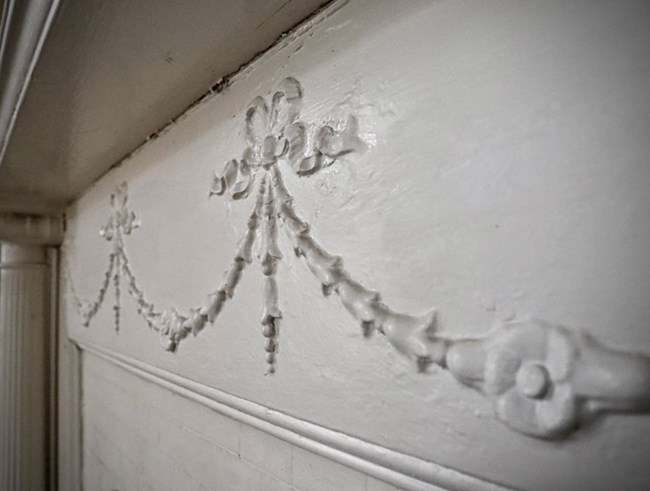
Photo Credit: NPS/Dani Beekman
The building of Quarters 1 failed to go unnoticed by those who resented Ripley’s appointment. Ripley, over the course of his tenure, was engaged in a few controversies. One such controversy included firing workers from the Armory, under the guise that they were taking advantage of the looser regulations under civilian leadership of the Armory. “…irregular work hours, leaving the shops at pleasure to attend to private concerns, reading newspaper during hours of labor, and smoking in the shops. The most serious abuse of all was the established idea that the men were entitled to their places….the pretentions of the men were such, if yield to, placed the establishment under their control.” He replaced these workers with individuals who followed him from his previous station at Kennebec Arsenal. The firings resulted in a surplus of housing in Springfield as the fired workers left to find jobs, resulting in a depressed housing market. Some workers, residents of Springfield, and Springfield City Officials resented the military structure implemented by Ripley at the Armory. These, among other claims, resulted in an investigation by the Military Court and one of the thirteen charges brought against Ripley related to the construction of his elaborate quarters. 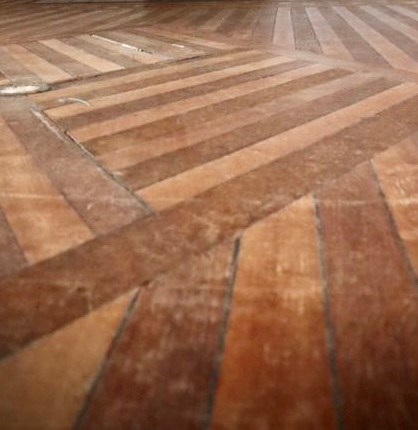
Photo Credit: NPS/Dani Beekman The landscaping of the Quarters changed multiple times, reflecting the different tastes of the various Armory leaders. At times the grounds included formal gardens, greenhouses, a rose arbor, fruit trees, a fountain and reflecting pool. In 1876, under Major J.G. Benton, multiple cannons and cannon balls lined the Green and around Commanding Officer’s Quarters, until World War II when scrap metal was needed. In the 1940s a color theme of red, white, and blue was used to represent the United States Flag. During World War II the public was encouraged to plant Victory Gardens, which could also be seen at Quarters 1. These gardens provided vegetables, fruit, and herbs, which reduced the pressure on the public food supply while serving as a morale booster. The Commanding Officer’s Quarters became an urban retreat for the Commandant and his family on the grounds of a federal armory. 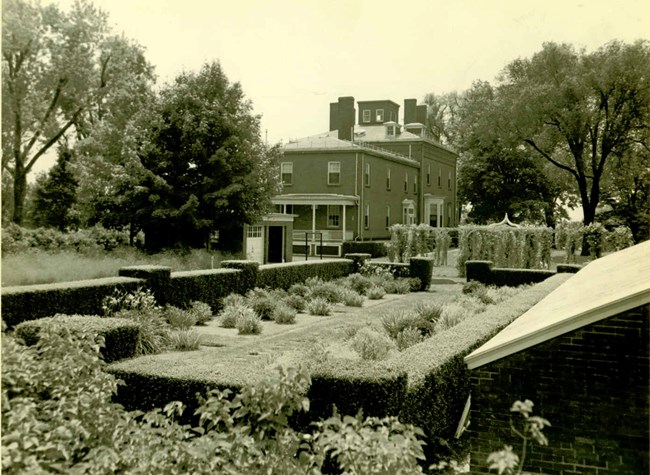
Photo Credit: Springfield Armory NHS Archives With the close of the Armory in 1968, the Commanding Officer’s Quarters has since served many functions including a conservation laboratory, a maintenance shop, office space and a place for programs and special functions. In 1960 it was designated as a National Historic Landmark and is listed in the National Historic Landmarks Register. In October 1974 it became a part of the National Park Service when Springfield National Historic Site was authorized. Today the building sits vacant as work continues to restore and preserve it to a period of significance. |
Last updated: May 18, 2021
